Boots have traditionally been the footwear of choice when heading out onto the hills and moors of the UK.
But sometimes a shoe can be the right choice for your outdoor excursion. The advantages of using a lower walking shoe include: it’s likely to be lighter than a boot, therefore less likely to induce fatigue; it can be more comfortable; it can also give more flexibility, doubling up as everyday footwear as well as performing well on the trails and tracks.
Walking shoes have their drawbacks too. Not extending up the ankle means they’re more susceptible to allowing rain to enter the shoe as it runs down the trouser leg, and water to get into the shoe if you’re passing through deeper puddles that overtop the ankle cuff. There’s less protection too for the ankle from knocks or dislodged stones and rocks. In extreme cases, deep mud can pull the shoe off your foot when negotiating bogs if you haven’t laced it up adequately.
But personally, I like the lightness of a shoe when heading out onto terrain where I think a boot is a bit over the top (literally!)
The shoes in the review are all designed for walking – some in fairly specific conditions – and have been tested extensively over a period of months. I’ve rated them for how well they perform in terms of grip, stability and waterproofness, as well as comfort, both in the uppers and underfoot shock absorption. I’ve also rated them for quality of manufacture and materials; value for money; and sustainability.
As always with footwear, I’d always recommend trying them on before buying. Probably more than any other outdoor kit, matching footwear to your personal physiology is really important. What’s comfortable for me may not be for you. My feet are size 44 (9½), with a wide but low-volume forefoot and medium heel width. Most models tested are also available in women’s versions, except where I’ve noted.
Hanwag Banks Low
£185
Country of manufacture: Bosnia-Herzegovina
Weight: 985g a pair
Colour: dark brown
Waterproofing: Gore-Tex
Women’s version: yes
Sizes: 6-14; women’s ; women’s 3½-9
Sole stiffness: 5/10
The European-made shoe from the German brand has suede uppers with a Nubuck overlay.
The Banks Low also has a Gore-Tex membrane to provide waterproofing. The heel cup is stiffened and held the foot in place well. There’s just a little protection at the toe from the suede and a small extension of the outsole rubber.
Overall, the uppers were comfortable, hugging the foot well. The Futura tongue has a bellows only on the outer edge. This makes the shoe easy to slide into and also holds the tongue in place well, preventing it sliding to one side and creating folds.
The laces are quite long, but stayed fastened as long as they were carefully knotted.
The midsole is constructed from a polyurethane wedge with a hard rubber heel element to increase torsional stability, though the sole is still quite flexible. The insole provides medium foam padding. In fact the Banks Low as a whole has medium underfoot cushioning. It remained comfortable over extended walks.
The outsole is Hanwag’s Endurance Hike, with 10 per cent recycled rubber. It gave good performance for traction and braking on rock, grass and gravel. It felt quite durable and can be resoled, thanks to its cemented construction. There’s a low rubber rand extending a little way over the uppers to provide some protection against knocks.
The forefoot is quite wide and there was no feeling of this part of the foot being pinched. The forefoot is medium volume.
The Hanwag shoe provided good comfort and its waterproofing kept the rain out. The design doesn’t shout ‘outdoors’ and I made extensive use of the shoes in urban and everyday situations as well as on the hill and trail, where its technical performance held up well.
Quality was good and the shoe does contain some recycled material in the outsole. The laces are also made from 100 per cent recycled material. European production also means there’s a lower carbon cost to shipping the items to the UK. It also uses mainly European sources for its materials. The brand’s parent company Fenix is a signatory and supporter of the UN Global Compact, covering an equitable approach to globalisation. It is also a member of the Fair Labor Association.
Fenix is also a signatory of the UN Fashion Charter for Climate Action.
The Banks Low shoe is a good general-use model, happy on the trail as well as on the High Street pavement so, despite its fairly steep price, you should be able to get a good deal of use out of the footwear.
Best uses: trail walking; country walking; urban and everyday.
Performance 34/40
Comfort 25/30
Quality 8/10
Value for money 7/10
Sustainability 7/10
Total score: 81/100
Hoka One One Anacapa Low GTX
£140
Country of manufacture: Cambodia
Weight: 796g a pair
Colour: black
Waterproofing: Gore-Tex
Women’s version: yes
Sizes: 6½-13½; women’s 4-9½
Sole stiffness: 4/10
Hoka is renowned for its thick, cushioned soles and the Anacapa Low GTX sole unit is deeper than many in this test, though there’s less underfoot cushioning than some of the brand’s models.
The uppers are a combination of Leather Working Group gold-rated nubuck leather and polyester fabric, with 71 per cent recycled content. A Gore-Tex membrane bootie provides some waterproofing for the shoes. There’s stiffening at the toe and heel to provide extra protection against knocks and the ankle cuff has a good amount of foam padding. There’s also a padded inner heel extension with a pull-on loop. This worked well at keeping the heel stable as well as ensuring comfort and good fit.
The shoes kept out splashes, but on very wet days, water entered via the tongue.
Overall, the Hoka shoes were among the most comfortable. They’re designed for walking rather than Hoka’s core running market, with neutral support from the sole and a middling amount of cushioning. This still made them the best provided with underfoot support in the test. The midsole is moulded EVA foam and the insole had a good amount of foam padding.
There was slight pressure on the outer edges of the forefoot, but nothing unbearable. One niggle was the tendency of the round-profile laces to come unfastened, no matter how they were tied. This was particularly the case when passing through undergrowth.
The outsole is made from Vibram Megagrip compound and has 5mm lugs. The Anacapa has Hoka’s Hubble heel, angled upwards, with a deep v-shaped cutout. All in all, this made for good walking gait, with good braking and traction on all the terrain surfaces I tested the shoes on.
The Anacapa shoe has good sustainability credentials, using Leather Working Group Nubuck, recycled polyester mesh and PFC-free water-repellent treatment in its uppers. The laces are recycled polyester too and the liner is derived from 50 per cent soybean oil. The Strobel board at the base of the foot has 80 per cent recycled polyester. Hoka has pledged to reduce its water use by 20 per cent by 2030 and its energy use by 25 per cent by that date.
The Hoka One One shoe provides some of the best comfort of any shoe in the test – it’s also the lightest – and had good stability on more technical ground, with good grip on rock and other terrain. It’s best suited to damp conditions rather than torrential rainy days.
Best uses: trail walking; hillwalking; country walking; trekking.
Performance 31/40
Comfort 27/30
Quality 7/10
Value for money 7/10
Sustainability 8/10
Total score: 80/100
Keen NXIS Evo WP
£135
Country of manufacture: Vietnam
Weight: 862g a pair
Colour: light brown
Waterproofing: Keen.Dry
Women’s version: yes
Sizes: 6-14; women’s 2½-9
Sole stiffness: 4/10
The NXIS Evo is Keen’s shoe designed for fast-and-light walking, and is among the lighter models in the test.
The uppers are largely mesh, and this WP version has Keen’s own Keen.Dry waterproof membrane. The pliable uppers make for a comfortable walk and the forefoot is wide, so there was no cramping of the toes and front of the foot. There’s a stiff, rubberised toe protector, with a cut out separating the two sections, allowing some flexing.
The heel cup is also stiffened, and the novel KonnectFit heel-capture system prevented heel lift. The system consists of a cord set-up that is tightened when pulling in the top lace section, with a plastic connector to the system. An exterior TPU frame also adds stability at the rear section of the foot.
Over extended use, the uppers’ mesh moulded nicely to my foot shape. There’s good venting from the fabric, yet the Keen.Dry waterproofing kept out the rain and splashes. The membrane is perfluorocarbon free. The tongue and ankle have a good amount of foam padding, though there was an initial pressure on my ankle bone from the cuff.
Underfoot cushioning comes from a generous amount of padding in the midsole, combined with removable polyurethane insole with a good amount of foam, particularly at the heel. The shoe has Keen’s Eco Anti-Odor treatment, which kept odours under control well during testing.
The outsole performed well, with good traction and braking. The 4mm lugs have an asymmetrical pattern, with the ones on the forefoot designed to offer uphill traction and the heel section lugs shaped for braking. The sole overall was very flexible, so these are not the shoes for technical, scrambly routes, but on trails, maintained footpaths and moorland tracks, the Keen shoes provided the right amount of support.
The NXIS Evo was among the most comfortable of the shoes in the test, apart from the niggle with the ankle cuff. The wide forefoot suited my foot shape, and the light design made for good performance over longer distances, with very little foot fatigue.
The Keen shoe is a good choice for those who like to up their pace on the trail and performed well on long walks.
The company uses PFAS-free water repellent treatment. It recycles a variety of materials into its footwear, including coffee-bean sacks and paraglider fabric. It is pioneering the use of plant based ingredients in its polyurethane soles and makes use of recycled PET bottles in its footwear. Some of its products contain 50 per cent recycled wool.
It supports minority groups in accessing the outdoors in Oregon and its employees have been given time off work to take part in litter clean ups in the outdoors. It has taken PFCs out of products that don’t need them and is switching to PFC-free treatments to its waterproof footwear.
Best uses: trail walking; fast-pace walking; trekking; country walking;.
Performance 32/40
Comfort 26/30
Quality 7/10
Value for money 7/10
Sustainability 8/10
Total score: 80/100
Meindl Lite Trail GTX
£192.50
Country of manufacture: not stated
Weight: 870g a pair
Colour: blue
Waterproofing: Gore-Tex
Women’s version: yes
Sizes: 6-15; women’s 3½-9
Sole stiffness: 5/10
The German brand says the Lite Trail GTX is suitable for walks on lighter terrain and everyday wear, which I think is pretty much on the mark.
The Meindl shoes worked well as general footwear, while still having the performance and quality to take to the footpaths and trails on daily walks on the moors and hills.
The uppers are mainly suede, with smaller mesh sections on parts of the forefoot, tongue and ankle. The material is pliant and comfort was good from the outset.
There’s good protection for the toes and heel thanks to a stiffened toe box and heel cup. The suede felt robust and resisted scuffing during extended testing. The ankle cuff is well padded. The forefoot is quite wide and low volume, which suits my foot. Lacing, which continues well towards the toe, enabled a good snug fit with no movement of the foot when heading downhill, or heel lift on uphill sections.
The midsole is EVA and is not particularly thick. Combined with a modestly foam-endowed insole, this gave medium underfoot cushioning. The Air-Active insole is vented to help keep the foot cool.
The outsole is Meindl’s own Lite Trail model, with different shaped lugs, plus extra contrasting elements at the forefoot, heel and arch. The rubber sole performed well, giving good traction and braking on a variety of terrains. It also had good torsional stability, making for assured progress on rockier section of my walks.
The Lite Trail GTX has a Gore-Tex membrane which kept out the rain, particularly in the main body of the uppers, though the tongue felt cool when wet due to its mainly mesh construction.
The Meindl shoes resisted odour build-up well during prolonged use.
Overall, the Lite Trail GTXs proved comfortable, both on harder trails, boggy moorland, rocky section and on the urban walks. They gave just enough underfoot cushioning to use on longer outings, and the relatively low weight helped limit fatigue.
Meindl’s own rating of these shoes as everyday yet technical footwear was borne out on our test. They became a favourite to slip on for normal use, but with the confidence of knowing they can be kept on for forays into the UK countryside. Quality was good and this, along with prolonged repeated use helps justify the shoes’ high price.
The main strand of Meindl’s sustainability is the durability of its footwear, as shoes that last longer mean less production impact on the environment. It provides free buses to its factory in Germany for employees, and doesn’t use PFCs in its materials and care products. It installed LED lighting at its Kirchanschöring works, to reduce energy consumption. Meindl is a member of the Friends of the Bavarian Academy for Nature Conservation and Landscape Management.
Best uses: trail walking; country walking; urban walking; everyday use.
Performance 34/40
Comfort 25/30
Quality 8/10
Value for money 6/10
Sustainability 7/10
Total score: 80/100
Muck Boot Outscape Lace Up
£150
Country of manufacture: Vietnam
Weight: 903g a pair
Colour: blue
Waterproofing: rubber/neoprene
Women’s version: yes
Sizes: 6-13; women’s 3-9
Sole stiffness: 3/10
The Muck Boot is a very different shoe from others in the test, being manufactured from neoprene to give 100 per cent waterproofing.
The Outscape is the brand’s trainer-type footwear in a range dominated by wellington-type boots.
The uppers are fairly pliant and the ankle cuff is made from stretchier material, as is the tongue. The forefoot is broad and high volume. There’s a little added stiffening at the toe and heel, and the sole unit extends at both front and back to help against knocks.
Underfoot cushioning was good, with the midsole containing a medium amount of padding, and the dual-density insole having good foam content throughout but particularly at the heel. The insole is vented and the top surface has antimicrobial treatment as has the shoe lining, which kept odours well under control.
The Neoprene lining aids wicking from the feet,
The outsole is designed to be self-cleaning in muddy conditions. The lugs are fairly shallow and the arch section is solid and reinforced, presumably to aid use on a spade if you’re using them for gardening duties – the Outscape is Royal Horticultural Society endorsed.
The flat profile of the outsole isn’t the best for rocky terrain, but the shoes are designed more for muddy routes, forest walks and gardens. Traction in these conditions was quite good, but the Muck Boot shoes are not suited to hillwalking or mountains. There’s little torsional stability, so technical ground is really outside what these shoes are designed for.
One of the drawbacks of the Outscape is that it’s not available in half sizes, so Muck Boot recommends going to the next size up. I’m usually a 9½, so used a pair of size 10s. This meant lacing the shoes fairly tightly to prevent foot movement within the shoe, which wasn’t ideal. It’s something to bear in mind, and I’d urge any potential buyers to try on a pair to see if they fit your feet
The styling of the Outscape Lace Up is quite contemporary, and is definitely not that of a pared-down welly. The typical user will be someone who enjoys forest walking, country walks and horticultural pursuits, rather than hoofing up a mountain. The Muck Boot shoe also ensures urban walks in rainy conditions won’t end up with soaking feet. Bear in mind that the tongue gusset only extends up as far as the third pair of lace holes, so if you encounter deeper water than that, it’s likely to overtop the waterproofing neoprene and enter the shoes.
The Muck Boot Company brand, which is now owned by Ohio-based Rocky Brands, doesn’t impart much information on sustainability. The latest version of the Outscape Lace Up uses Bio Lite EVA in its midsole, a material that has been certified as biodegrading in bioreactor landfill sites. The quality of the materials and manufacture indicate the shoes will be durable, an important aspect of sustainability.
Best uses: country walking; forest and woodland walking; urban walking; gardening.
Performance 32/40
Comfort 22/30
Quality 8/10
Value for money 8/10
Sustainability 3/10
Total score: 73/100
Oboz Sawtooth X Low B Dry Waterproof
£150
Country of manufacture: Cambodia
Weight: 1,022g a pair
Colour: light brown
Waterproofing: BDry
Women’s version: yes
Sizes: 7-13; women’s 4½-7½
Sole stiffness: 6/10
The Montana-based brand has significantly modified and improved its original Sawtooth shoe.
The new version has improved grip and comfort while retaining, Oboz says, durability and fit.
The uppers are a combination of Nubuck and Cordura mesh, and proved supple enough to mould comfortably to my feet while providing a good degree of protection from scrapes and knocks. The cutouts in the leather, with the mesh inserts, provided good temperature control. The brand’s own B-Dry membrane provided good waterproofing, and the tongue gusset ran all the way up to the fifth pair of lace holes, to help keep the water out on some pretty wet days.
There’s good foam padding round the ankle cuff, and the toe box and heel cup have stiffening – there’s a TPU heel counter – which protected the foot from knocks. The forefoot is fairly wide and medium volume.
Underfoot cushioning was medium, with most of the shock absorption coming from the rubberised EVA midsole, which has an area at the heel with softer foam. The O-Fit insole has a modicum of foam padding, and there are extra foam inserts at the heel and forefoot. The rear section is interesting in being moulded into a defined shape to fit the foot. There are support areas at the arch, both inner and outer, and particularly at the heel. The effect of this is to give a very secure feel to the shoe, holding the foot in place with no movement, either forwards on downhill sections or as heel lift uphill.
The whole shoe feels to hug the foot securely, giving assured progress over rockier ground and more technical sections.
The outsole is Oboz’s Trail Tread, with good irregular lugs down the centre and deep ones that wrap up around the sole. Traction and braking on rock and other terrain were good. The compound felt durable.
The flat-profile laces are made from recycled Rpet Repreve and locked in place well.
The Sawtooth X Low B Dry Waterproof have Oboz’s defined design, and certainly look like they mean business. They provided assured, comfortable walking on a variety of terrains, and were comfortable on longer days. The shoes have good torsional stability and felt assured on rocky sections of my walks.
Underfoot cushioning wasn’t as marked as some of the shoes in the test, but comfort was good, with the uppers and insole cradling the foot well. They’re good all-rounders at a competitive price.
Oboz, part of the KMD Brands company, became a certified B Corp company in 2023. Oboz, through Trees for the Future, ensures a tree is planted for every pair of footwear sold.
The parent company, whose brands also include Kathmandu and Rip Curl, has set targets for reducing CO2 emissions by itself and associated suppliers by 4.2 per cent per annum. Oboz uses finished leathers in all its footwear from gold-rated Leather Working Group certified tanneries. Oboz said it has met its goal of using 100 per cent PFAS and PFC-free non-wicking treatments in waterproof membranes two years earlier than planned.
I found the Sawtooth X Low B Dry Waterproof a good general purpose walking shoe that was also stable on more technical terrain. Comfort was good and the shoes had a sturdy feel, reflected in the weight of the Oboz footwear, the heaviest in the test.
Best uses: trail walking; hillwalking; urban walking; everyday use.
Performance 35/40
Comfort 24/30
Quality 7/10
Value for money 8/10
Sustainability 7/10
Total score: 81/100
Salewa Mountain Trainer Lite GTX
£165
Country of manufacture: Vietnam
Weight: 964g a pair
Colour: green/dark blue/black
Waterproofing: Gore-Tex
Women’s version: yes
Sizes: 6-13; women’s 3-9
Sole stiffness: 7/10
This shoe from the Dolomites-based brand has a definite mountain style, with lacing right to the toe, and deep lugs on the outsole.
The Mountain Trainer Lite GTX is a lighter version of the Mountain Trainer 2, and uses fabric uppers rather than suede. The main body of the shoe is made from a tough mesh material, with TPU overlays around the rand. There’s a system of Kevlar cables that incorporate the lace holes, and the Salewa shoe also has the 3F system, a wrap-around cable linking the arch, hell and lacing system, to keep the foot in place.
There’s a stiff rubberised toe box and the heel cup is also strengthened, with a plastic stabiliser. The ankle cuff has good foam padding. The lacing system allows accurate tension to be applied to different parts of the foot, though the narrow, round-profile laces which, if carefully knotted, stayed in place.
The sole unit is quite stiff and has good longitudinal torsion, which made the shoes feel stable on technical terrain. Underfoot cushioning was medium, with an EVA midsole and a medium foam insole, though there is added foam padding at the heel. The shoe is made on a last with a good foot-shaped design, with a fairly broad forefoot and medium volume. My feet felt well supported without pinching at the outer edges.
The outsole uses Pomoca compound rubber in a varied pattern with good depth of lugs. It had good traction and braking on rock and worked well on all our test terrains.
Waterproofing, from the Gore-Tex Extended Comfort membrane, kept out the rain and splashes. The gusset comes almost all the way up the lacing area, helping stop water getting into the shoe.
Salewa recommends the Mountain Trainer Lite GTX for Alpine approaches, hikes and treks. I found the shoe versatile enough for use in a wide range of UK terrains, from boggy moorland to scrambly hill routes. The Salewa shoe felt sure-footed on rocky sections, gravel paths and grass. Weight is middling, but the construction felt sturdy. Overall quality was good. The brand says the shoe is suitable for vegans.
There’s little sustainability information on the Mountain Trainer Lite GTX. Salewa operates a repair service for its products and has a number of measures in place to increase sustainability. The company says its three photovoltaic plants provide more energy than its office and warehouse need, and the excess is fed into the grid. There’s a piping system to store and distribute thermal energy. Salewa and its parent company Oberalp is part of a European Outdoor Group research project looking at how to reduce the number of microplastics released when synthetic clothes are washed.
It provides its employees with work bicycles and electric scooters and there are free e-bike charging points for customers at its shops.
Best uses: hillwalking; mountain trails; country walking; summer Alpine trails.
Performance 34/40
Comfort 24/30
Quality 8/10
Value for money 7/10
Sustainability 7/10
Total score: 80/100
Zamberlan Anabasis GTX Short
£215
Country of manufacture: Italy
Weight: 962g a pair
Colour: dark blue
Waterproofing: Gore-Tex
Women’s version: no (Circe GTX Low is closest women’s shoe, sizes 4-9, and costs £190.)
Sizes: 41-47 (7-12)
Sole stiffness: 7/10
The Italian brand says the Anabasis combines the lightness of a trailrunning shoe with the extra support and protection needed for hiking.
The uppers are made from synthetic material Zamberlan describes as microfibre. This consists of mesh sections combined with a rubberised overlay, which gave good protection against knocks. The toe box has a hard rubber top layer and the heel cup is also strengthened. During extended use, the uppers moulded well to my feet, making for a comfortable walking experience.
The forefoot is broad and medium volume, and is well shaped on Zamberlan’s X-Active Fit last, with no cramping of the toes or pressure on the outer side of the foot. The tongue is stretchy material and the ankle cuff has just the right amount of padding for comfort over longer periods. The shoes provided a good, snug fit and secure feel on the hill.
Waterproofing comes from the shoes’ Gore-Tex Extended Comfort membrane, and the tongue gusset extends right to the top of the lacing area, making the Zamberlan shoes among the best in the test at keeping the rain and water out.
The sole unit is quite stiff, with torsional stability, enabling good progress on a variety of terrains, including more technical, rocky sections of route. The Anabasis GTX Short felt at home on hills and mountains, while still being comfortable enough for short country walks or even everyday, urban use.
The outsole is Vibram’s Junko, which uses Megagrip compound. Traction and braking on rock were very good, and the shoes’ grip on a variety of surfaces was good. The EVA midsole, combined with an insole with good foam padding, especially at the heel, provided good underfoot cushioning.
Quality of the Italian-made shoes was good, and they had a robust feel.
The Zamberlan Anabasis GTX Short shoes were among the most comfortable, while also providing support and stability on rocky and technical ground.
Zamberlan provides little information on the Anabasis shoes’ sustainability or that of the company as a whole. The European manufacture means less energy and fewer emissions are expended transporting the products to the UK, and the high quality and design indicate the shoes should be durable, an important sustainability consideration.
Best uses: hillwalking; mountain trails; country walking; trekking; urban and everyday walking.
Performance 37/40
Comfort 26/30
Quality 8/10
Value for money 6/10
Sustainability 5/10
Total score: 82/100
The Zamberlan Anabasis GTX Short came out tops in our testing, just pipping the Hanwag Banks Low and the Oboz Sawtooth X Low B Dry Waterproof. The Zamberlan shoes combined comfort, performance and quality, but at a high price. The Hanwag shoes are great for general use while performing well on the hill, while the Oboz model provided good performance at a competitive price.
- The recommended selling prices were correct at the time of writing. All the shoes were provided to grough by the brands.
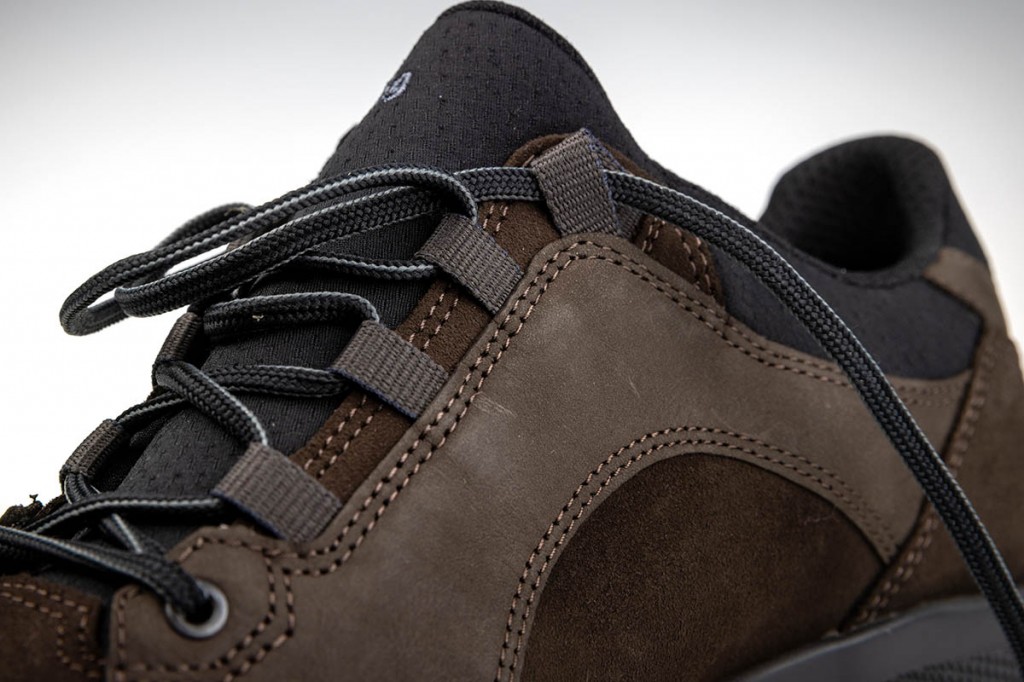
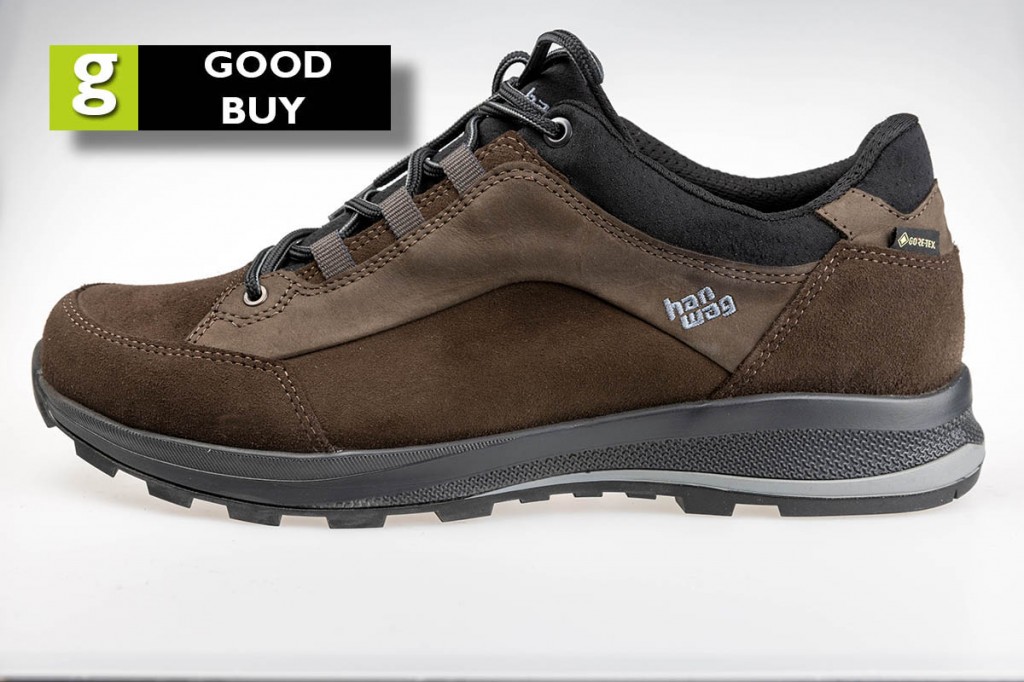
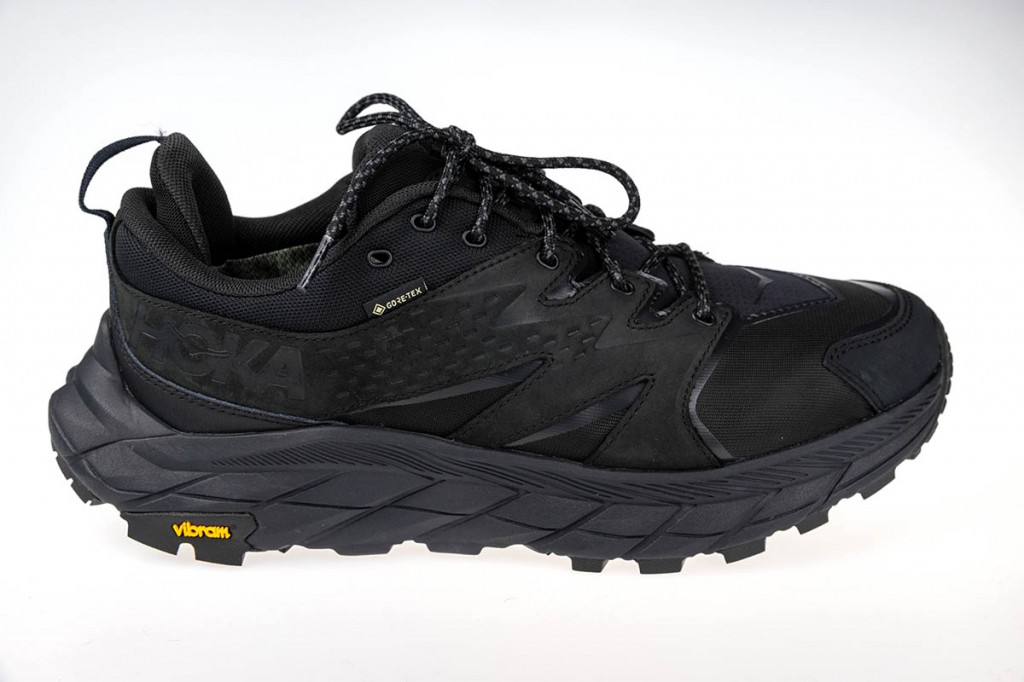
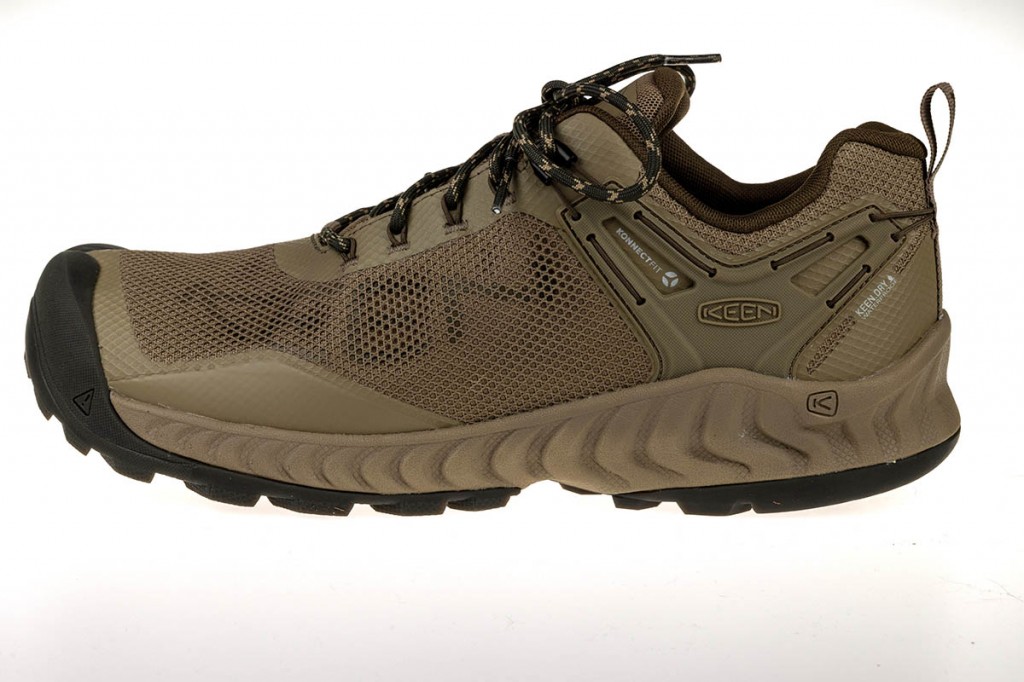
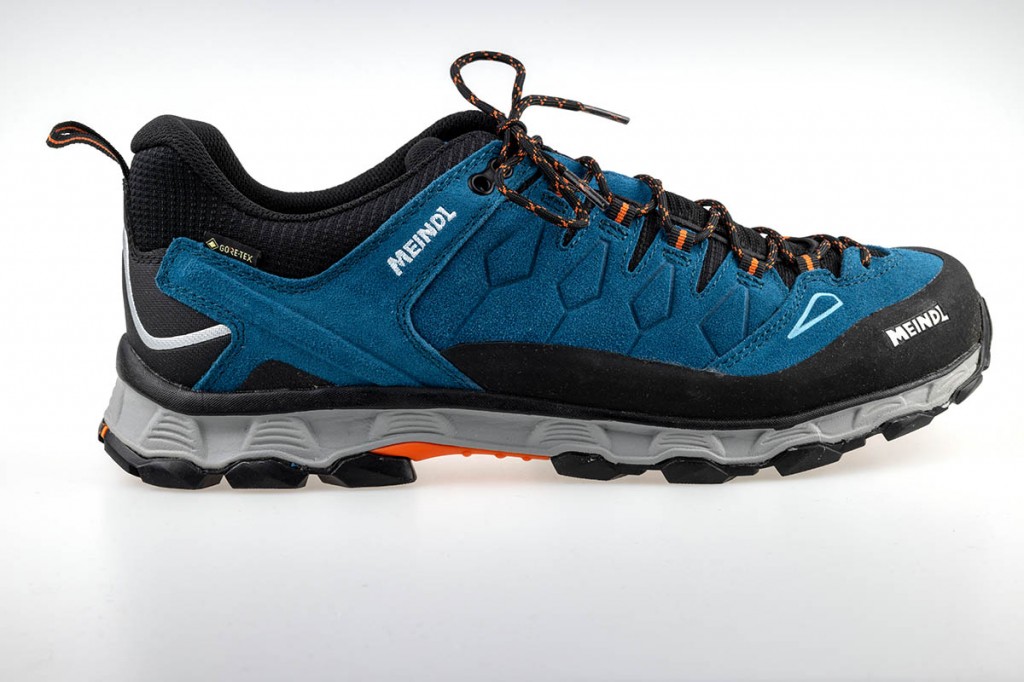
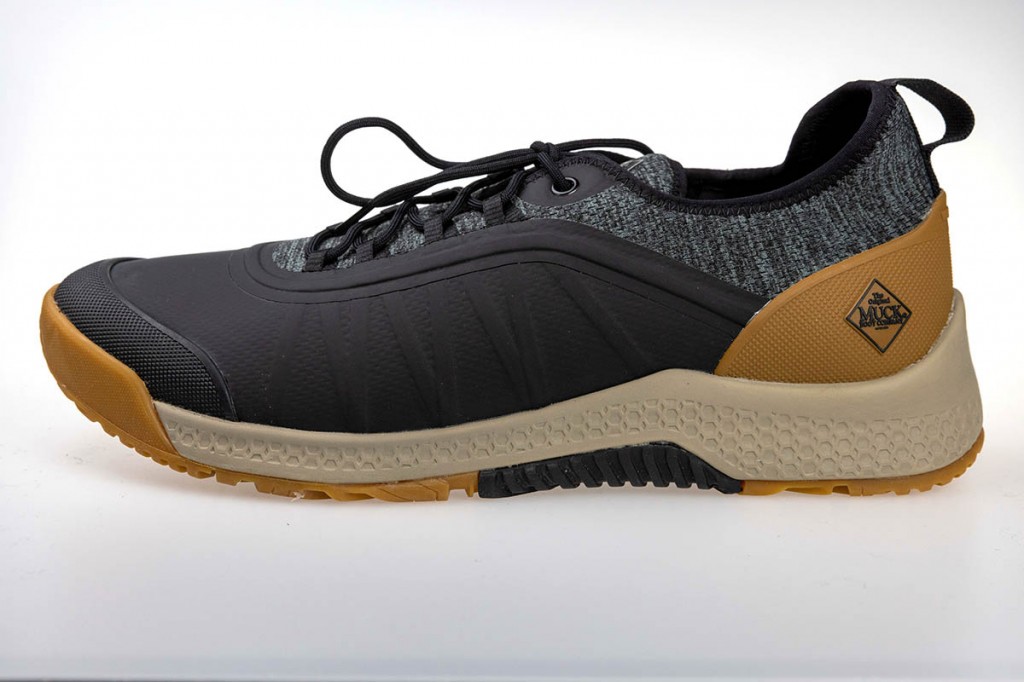
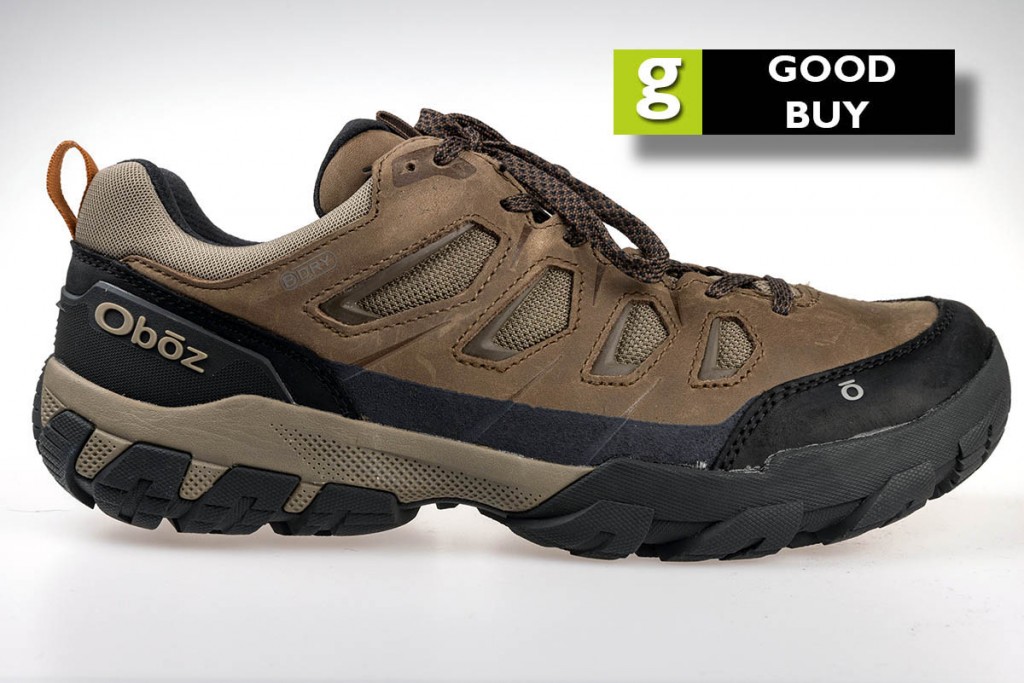
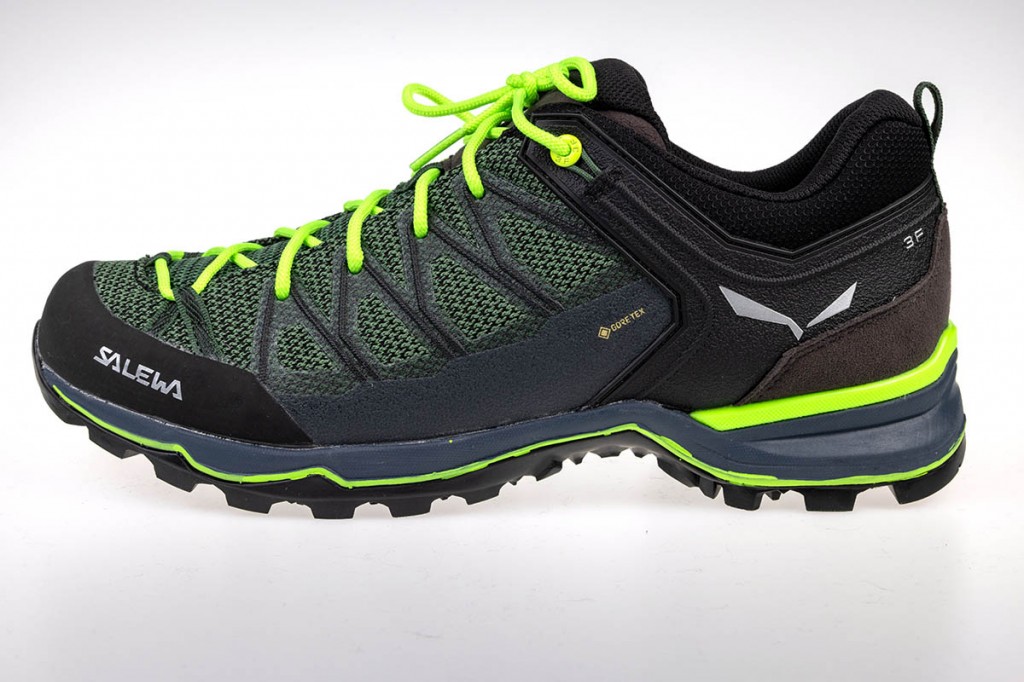
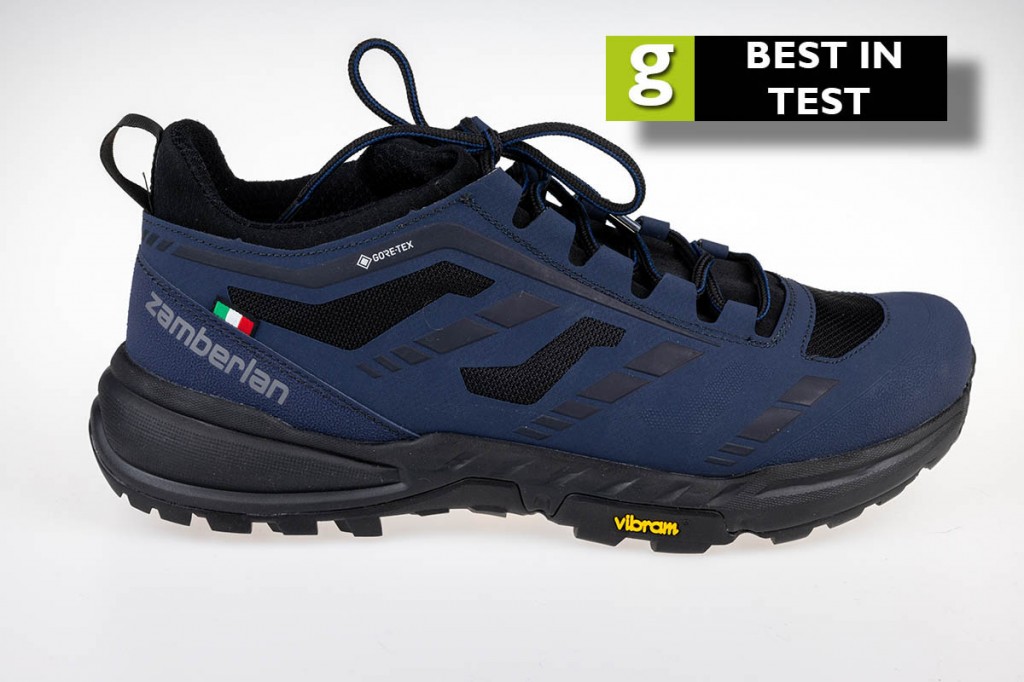
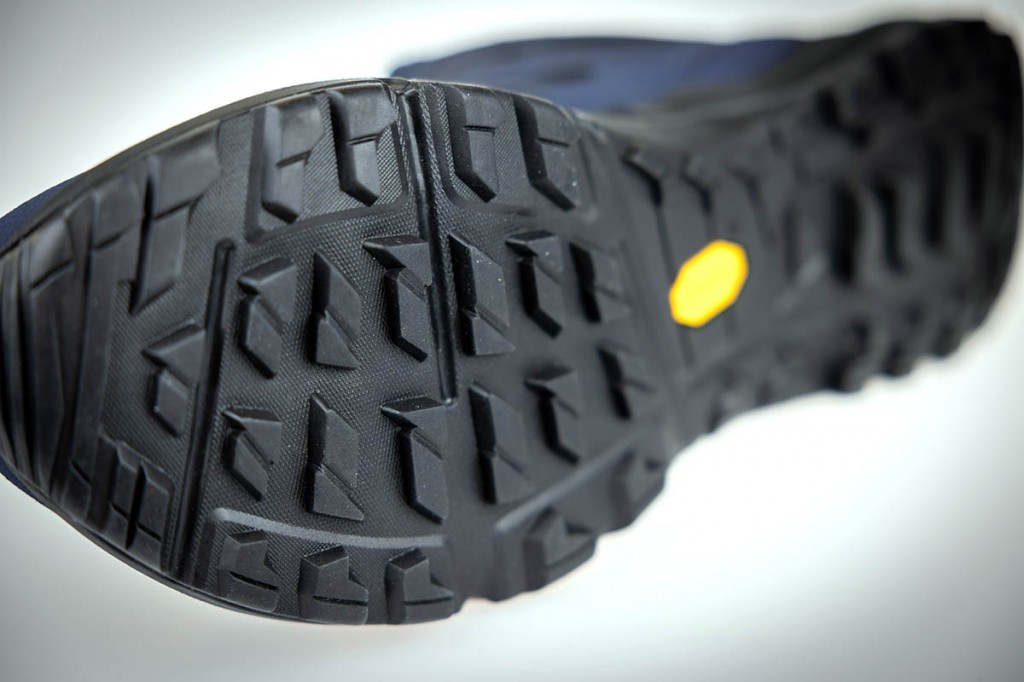
Janet
20 December 2023Han Wag also make specialist boots and shoes for those of us with bunions. A walking saviour. The most comfortable boots I have worn